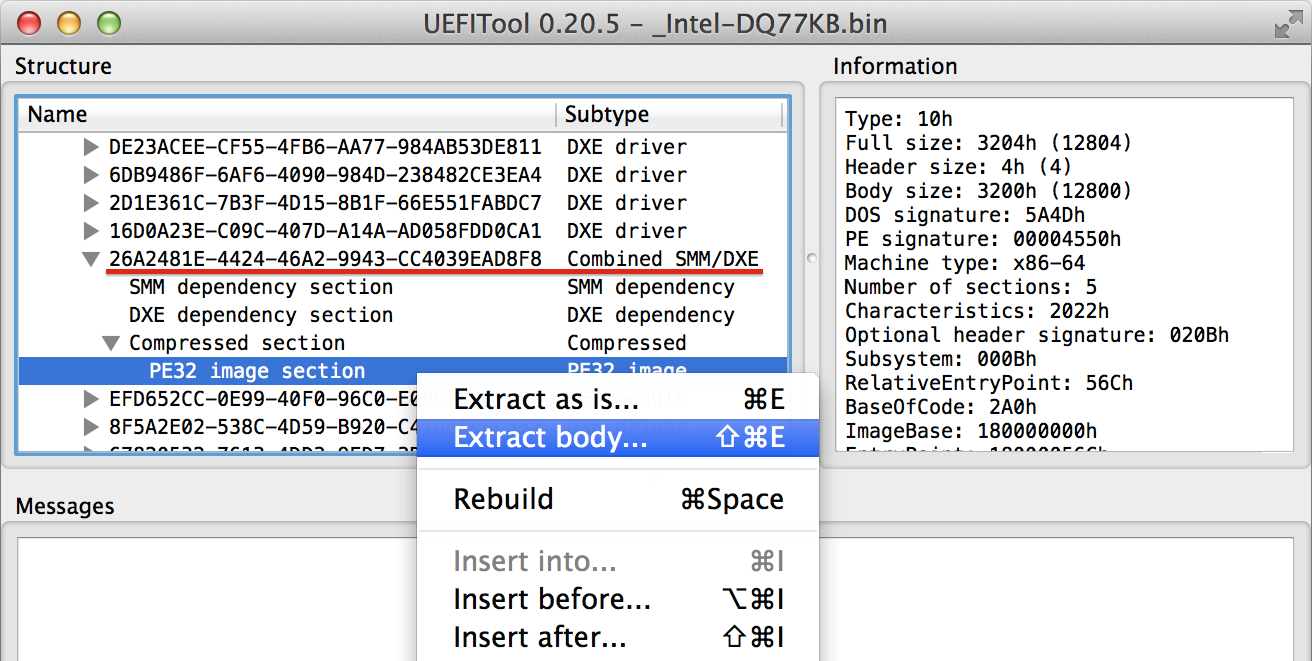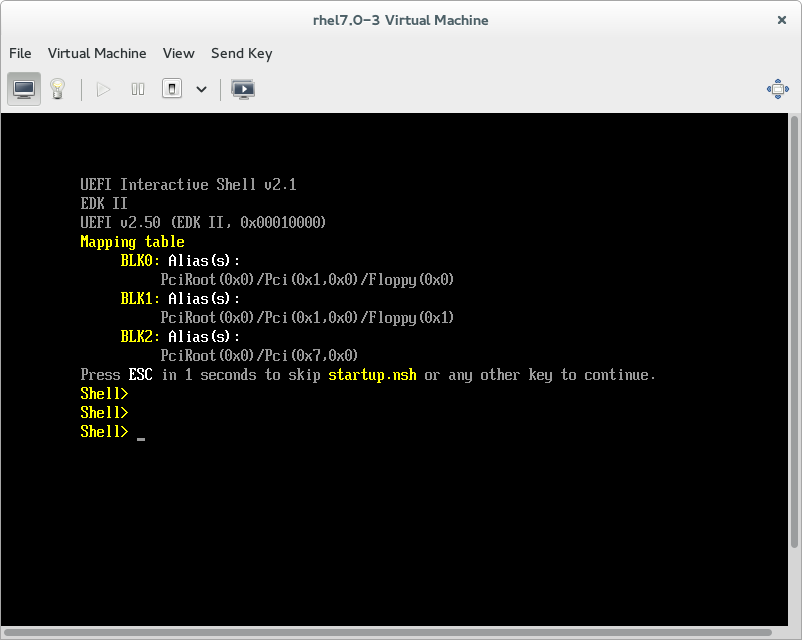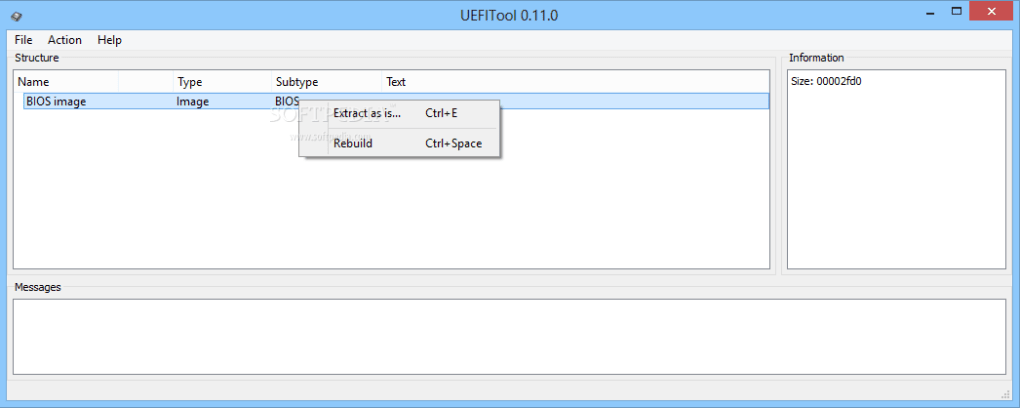

- Uefitool add uefi shell to bios install#
- Uefitool add uefi shell to bios software#
- Uefitool add uefi shell to bios code#
- Uefitool add uefi shell to bios Pc#
The rootkit would then be loaded every time the PC is started.
Uefitool add uefi shell to bios install#
On older PCs without this security feature, a rootkit, containing viruses or spyware, could install itself and become the boot loader.
Uefitool add uefi shell to bios software#
By default, Secure Boot will be enabled, therefore only software with an embedded Microsoft signed key will run. PCs that come with Windows 8 and above include UEFI firmware instead of the traditional BIOS. Windows 8 and above have included further optimisations and improvements for UEFI systems, including a faster boot times, 32-bit UEFI support, and support for secure boot. 32-bit version of Windows 7 were not supported due to the lack of native 32-bit UEFI firmware, caused by the mainstream status of 64-bit computing. The 64-bit versions of Windows 7 are compatible and can be installed on a UEFI based PC. Microsoft introduced UEFI for x86-64 Windows operating systems with Windows Server 2008 R2 and Windows 7. Unlike other “native” UEFI diagnostics, Pc-Check UEFI delivers direct, legacy free hardware testing. It has trouble initializing multiple hardware devices at once, which leads to a slower boot process when initializing all the hardware interfaces and devices on a modern PC. The BIOS must run in 16-bit processor mode, and only has 1 MB of space to execute in. Larger drives are now far more common, and a computer with a BIOS can’t boot from them due to the way the BIOS’s Master Boot Record system works. It can only boot from drives of 2.1 TB or less.

The traditional BIOS still has serious limitations. But the BIOS hasn’t advanced and improved nearly as much as other PC technology has since the days of MS-DOS. This allows the BIOS to more easily configure devices and perform advanced power management functions, like sleep. Some extensions have been developed, including ACPI, the Advanced Configuration and Power Interface. In that time it has evolved but these improvements have been limited. Why replace Bios?īIOS has been around since the 1980s. UEFI runs in both 32 or 64-bit mode, provides more addressable space than BIOS, hence faster boot times.
Uefitool add uefi shell to bios code#
It also boots in a more standardized way, launching EFI executables rather than running code from a drive’s master boot record. This is because UEFI uses the GUID Partition Table (GPT) instead of the Master Boot Record (MBR). UEFI firmware can boot from drives of 2.2 TB or larger-theoretically the limit is in excess of 9 zettabytes. This new standard avoids the limitations that exist with BIOS. UEFI supports larger hard drives, faster boot times, has more security features, and a graphical user interface. UEFI is the modern solution and replacement for BIOS. UEFI vs Bios or legacyīoth UEFI and BIOS are low-level software that starts when PC boots before the operating system loads. It checks to see what hardware components are installed in the computer, initialises the components and then hands control over to the operating system. The new specification addresses several limitations of BIOS, including restrictions on hard disk partition size and the amount of time BIOS takes to perform its tasks.īecause UEFI is programmable, original equipment manufacturer (OEM) developers can add applications and drivers, allowing UEFI to function as a lightweight operating system.

Like BIOS, UEFI is installed at the time of manufacturing and is the first program that runs when a computer is turned on.

UEFI replaces the traditional BIOS with a new and enhanced interface between operating systems and firmware platforms. With a few exceptions, computer operating systems rely on the computer’s BIOS (Basic Input/output System) to communicate with hardware device firmware during the boot process (Boot Services) and after the system is booted (Runtime Services). UEFI represents a significant shift in the PC market from an outdated technology to a new modern one. UEFI stands for Unified Extensible Firmware Interface.


 0 kommentar(er)
0 kommentar(er)
